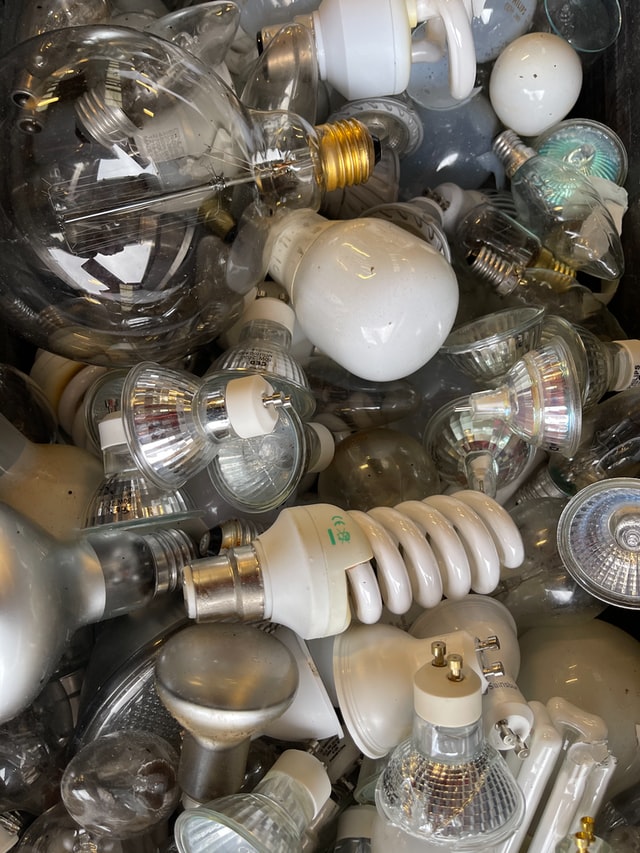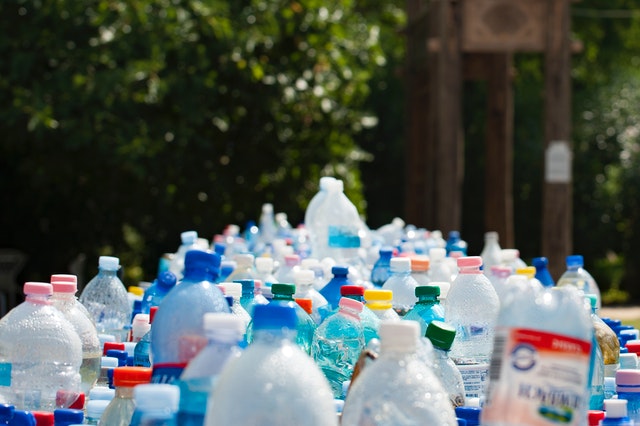
Most people understand the importance of recycling. Reusing and repurposing materials decreases the need for new manufacturing, which, in turn, reduces emissions and waste. However, not everyone realizes that lightbulbs need proper recycling, too. Not only do they contain hazardous materials in some instances, but they also make up a significant portion of landfill waste. Read on for five important reasons businesses and individuals need to make sure their lightbulbs are recycled safely.
1. Less Pollution
75% of the glass that enters the waste system ultimately ends up in landfills. In the United States, 10 million metric tons of glass are disposed of annually. Glass is not a biodegradable material, and therefore, is one of the worst things to dispose of this way. It can take hundreds of thousands of years for glass to decompose into the environment. For this reason, it is important that glass lightbulbs and fixtures are disposed of properly so that they are not added to the already-massive landfills across the globe.
It is especially critical that commercial properties and businesses that use hundreds if not thousands of bulbs and fixtures prioritize recycling. There are lots of commercial lighting recycling services that can help streamline this process and make it simple and easy.
2. Reduced Environmental Contamination
Some lights contain mercury, such as compact fluorescent lights (CFLs), which are very common. When these bulbs are thrown into the regular garbage, they will likely break, releasing harmful mercury into the ground. Landfill groundwater can then become contaminated, which leads to harmful leachate that can affect drinking water.
Phosphor, which is in many fluorescent bulbs and tubes, is also hazardous in large quantities. It is dangerous to handle broken fixtures, so the best option is to work with a commercial lighting supplier who can safely secure the broken pieces to ensure they will not harm human or environmental health.
3. Light Bulb Materials Can Be Reused
There are many components of a light bulb or fixture that can be reused and repurposed. When these raw materials are reused rather than made new, energy is saved. For example, aluminum, which is a common light material, requires about 96% less energy to make from recycled cans than it does to process it from raw material. Mercury, glass, and metal are all highly reusable materials that are otherwise wasted and toxic in landfills.
In fact, virtually all components of a fluorescent bulb can be recycled and used in other items and materials, and about 95% of an LED bulbis recyclable. However, not all facilities are able to separation light bulb recycled materials. That’s why it is important to work with a service that can ensure your bulbs are sent where they can be processed efficiently.
4. Improper Disposal is Illegal in Some States
Depending on where you live or where your business is located, you may be required by law to properly dispose of your light bulbs. Broken bulbs can be very harmful to those that handle your garbage, and the hazardous materials can quickly cause contamination. For example, in the state of Maryland, it is illegal to throw CFLs in your household garbage. In this case, you would need to work with a local program or a Maryland commercial lighting provider to safely handle your discarded fixture and lighting materials. Check with your local ordinances on light bulb disposal and recycling to determine the laws in your area. Regardless, recycling should be part of your regular routine for the sake of public and environmental safety.
5. LED Upgrades
There are some types of lightbulbs that are more harmful for the environment than others. LED lights use much less energy to operate and need to be replaced less frequently than other types of bulbs. In fact, LED light fixtures have been proven to last as long as 100,000 hours, with an average lifespan of 10-20 years. Compared with incandescent bulbs, which last around 1,000 hours, and CFLs, which last around 8,000, this is a major benefit.
LED is a highly efficient technology when it comes to energy use, as they require at least 75% less than other bulbs. This ultimately leads to reduced emissions. LEDs are already forecasted to make up 87% of light sources by 2030, so you may as well upgrade your lighting now and recycle your old, out-of-date light fixtures and bulbs.



